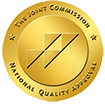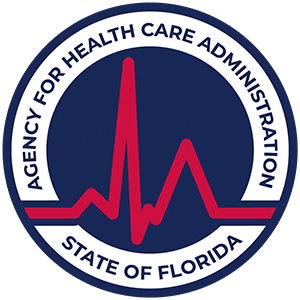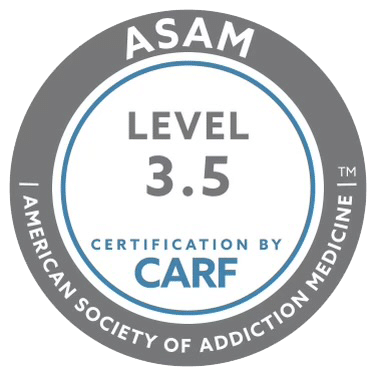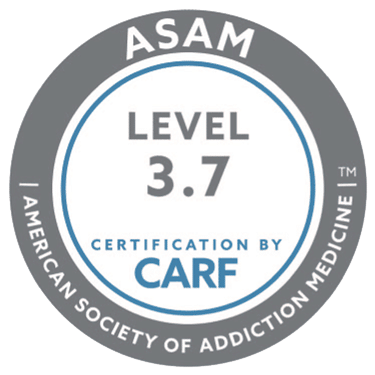According to CDC statistics, opioid addiction was responsible for over 69,000 opioid overdose deaths in 2020. To this date, substance abuse disorders related to the drug continue to be a growing concern globally.
Luckily, researchers are constantly developing methods to combat opiate addiction and relieve its adverse effects.
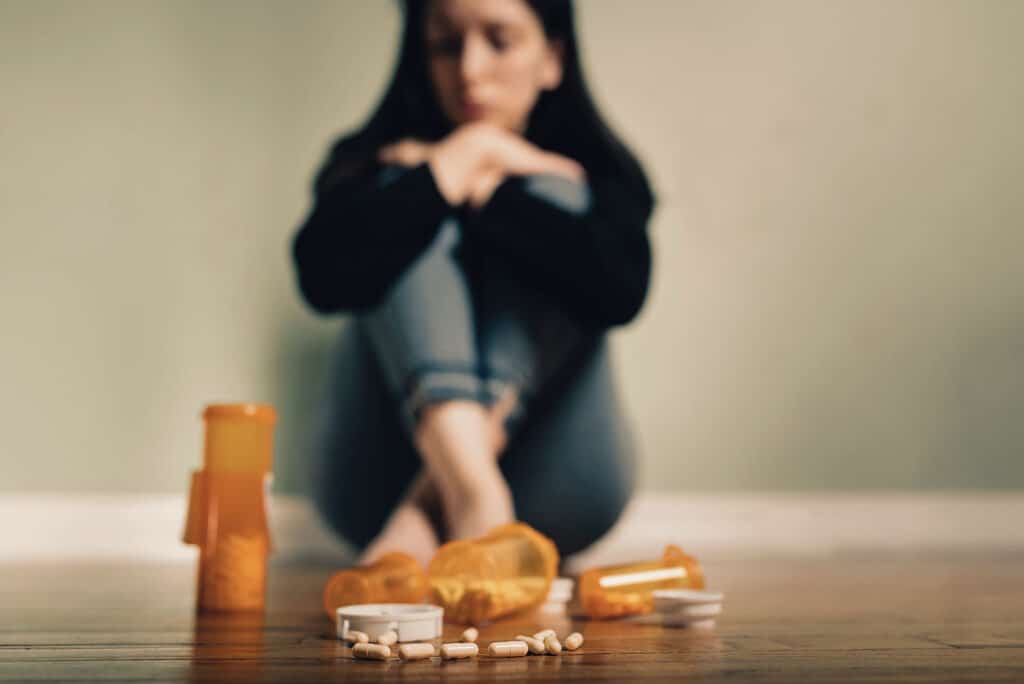
This article will discuss how opiate addiction treatment works, available treatment programs and options, and its causes and symptoms.
Definition of Opiate Addiction
Opioids are a form of narcotics doctors prescribe to relieve moderate to severe pain. However, the drug is also sold illegally and taken to trigger a person’s release of endorphins. They include strong prescription pain relievers, such as oxycodone, hydrocodone, fentanyl, and tramadol
These are some of its effects on consumption:
- Induces drowsiness
- Blocks the feeling of pain
- Boosts sensitivity to pleasure
- Temporarily grants a powerful sense of well-being
- Gives hallucinations in higher doses
While opioids are sometimes prescribed to treat pain after surgery, they can bear serious addiction risks. Patients who have experienced taking the drug may start looking for that euphoric feeling, which leads to fixation.
Prevalence of Opiate Addiction
According to research by the National Institutes of Health, more than 16 million people across the globe struggles with opioid addiction. This demographic includes around 2.1 million Americans abusing prescription opioids and at least 120,000 deaths worldwide.
The prevalence of opiate addiction links to its accessibility and how easy it is to get addicted to the drug. A study conducted by the Oregon Health & Science University (OHSU) even states that opioid is more accessible than the corresponding medication-assisted therapy.
Given the conducted research and statistics, it’s clear why opiate addiction continues to be a national public health crisis in the U.S.
Significance of Treating Opiate Addiction
Opioid abuse is a gateway to many life-threatening side effects, such as:
- Hypoxia
- Loss of consciousness
- Permanent brain damage
- Breathing problems
- Respiratory depression
- Coma
- Immunologic and hormonal dysfunction
On top of these complications, various studies show a strong link between its use and criminality. The state of psychosis opioids gives its users can result in aggressive behaviors, hostility, and violence.
The first step to solving this national crisis is understanding the root cause of the addiction and its adverse effects. This will help psychiatrists and health institutions develop the appropriate treatment to combat the disorder, effectively reducing the risks of casualties.

Causes of Opiate Addiction
While the medical use of opioids can already lead to dependency, consumption methods outside the usual prescriptions are what make them more addictive. Apart from oral intake, the drug’s users crush the pill and mix the contents in a solution to be injected or snort the powdered form.
The longer exposure a person has, the higher the risk of long-term use increases. Other factors that can lead to opiate addiction include the following:
- Personal or family history of substance abuse
- Prolonged medical use (for chronic pain) or exposure to the drug
- Poverty and unemployment
- Mental health disorders (depression, anxiety, etc.)
- Criminal activity
- Constantly under stressful situations
- Peer pressure
- Alcohol and drug relapse
- Thrill-seeking behavior
- Relationship problems (familial, romantic, and platonic)
Signs and Symptoms of Opiate Addiction
The indications of substance abuse, particularly for opioids, can vary per person. Someone who has become dependent on the drug may not necessarily exhibit every behavior, but there are identifiable patterns.
These are the most common signs and symptoms of opiate addiction:
- Drastic mood swings
- Abrupt changes in sleeping pattern
- Anxiety and irritability
- Tremors in various parts of the body
- Spacing out or staring blankly frequently
- Euphoric mood for several hours
- Excessive need for social isolation
- Muscle spasms or involuntary twitches
- Nausea and vomiting
- Short to long-term memory loss

Treatment Options for Opiate Addiction
The average time a person becomes dependent on opioids due to intake and exposure is a week or less. However, the adverse effects can last years or even a lifetime if not addressed and treated immediately.
Luckily, there are many approaches to treating opiate addiction that can be done individually, simultaneously, or in a prescribed order.
Medical Detoxification
Medical detoxification creates a safe and medically supervised environment for managing the withdrawal symptoms of addiction. While it doesn’t necessarily treat substance use disorder, it acts as the initial step to recovery and sobriety.
Detox admission can take anywhere between a few days to two weeks, depending on the severity of the patient’s condition.
Medication-Assisted Treatment
Medication-Assisted Treatment, or MAT, combines counseling, therapy, and medication to treat addiction-related illnesses. The treatment’s primary goal, apart from aiding in substance abuse recovery, is to disprove the misconceptions associated with medical drugs for curing opioid use disorders (OUD).
Patients who undergo MAT have access to three options, each with a specific FDA-approved drug; buprenorphine/naloxone, methadone, and naltrexone.
Buprenorphine
Buprenorphine is a synthetic opioid that helps patients overcome withdrawal symptoms to focus on therapy. The intake methods include placing it on the cheek, under the tongue, as an implant, skin patch, or by injection.
These are the buprenorphine products approved by the FDA for treating opioid addiction:
- Cassipa sublingual film
- Sublocade injection for subcutaneous use
- Zubsolv sublingual tablets
- Bunavail buccal film
- Subutex sublingual tablet
- Suboxone sublingual film or tablet
- Probuphine implant for subdermal administration
Methadone
Methadone is another form of synthetic opioid that acts similarly to buprenorphine. However, the difference between them lies in their potency.
While both drugs are capable of inducing euphoria and respiratory depression, buprenorphine has weaker effects. Nonetheless, methadone is an effective replacement therapy for eliminating opioid cravings and withdrawal symptoms.
The methadone products approved by the FDA are Methadose oral concentrate and Dolophine tablets.
Naltrexone
Naltrexone works by blocking opioids’ sedative and euphoric effects. Unlike buprenorphine and methadone, naltrexone reduces cravings and dependency without activating the body’s receptors.
The only naltrexone product approved by the FDA for treating opioid use disorder is Vivitrol intramuscular for extended-release injectable suspension. It’s taken once a month or every four weeks, depending on the patient’s needs, and with the help of a medical practitioner.
Naltrexone can also be consumed as daily pills (ReVia and Depade oral) for alcohol use disorder.

Behavioral Therapy
Behavioral therapy encompasses a wide range of therapies for treating substance use and many other mental health and behavioral health disorders. The basis of this treatment is that all behaviors are learned and, therefore, can be changed or corrected.
While there are many types of behavioral therapy, the ones commonly used for opiate addiction are cognitive behavioral therapy, contingency management, and motivational interviewing.
Cognitive Behavioral Therapy
This form of therapy combines cognitive and behavioral to create a cohesive structure that analyzes and utilizes patterns of thought and action. Cognitive behavioral therapy, or CBT, helps patients understand emotions and how they influence their behavior.
People without addiction or mental health disorders can also try CBT to overcome difficult scenarios, such as:
- Insomnia and restlessness
- Handling stressful situations
- Mourning the loss of a loved one
- Relationship problems
- Divorce or breakups
- Severe shock from a serious health diagnosis
- Self-esteem issues
Contingency Management
Contingency management refers to behavioral therapy that utilizes rewards as motivation for positive behavior, such as resisting the urge to take drugs and maintaining sobriety.
The attending psychiatrist sets a goal for the patient to follow, and upon completion, they’ll be rewarded with a certain prize (gift cards, vouchers, and services).
Motivational Interviewing
Motivational interviewing, or MI, incorporates a goal-oriented communication style that aims to strengthen a patient’s commitment and motivation to change. This therapy gives importance to building rapport with the client, especially during the early stages of counseling.
At the core of MI are three guiding principles, namely:
- Engaging in a therapeutic conversation about change
- Building a collaborative relationship with the patient
- Evocating change from the patient’s commitment to improve
Support Groups
A support group consists of people with varying backgrounds who share similarities in medical conditions, mental health disorders, and other hardships.
This type of therapy’s goal is to provide different perspectives on coping, give guidance, and express pent-up emotions to a community that can relate to each other’s struggles.
12-Step Programs
12-step programs rely on peer-based mutual aid to create a safe and confidential environment for discussing the hardships of alcohol and substance abuse. This support group program aims to change the addictive habits of patients and help them reach a spiritual awakening.
The process involved in this form of counseling includes:
- Admitting you have no control over addiction
- Believing you can rely on a Higher Being for strength and guidance
- Discussing your past mistakes with peers
- Reflecting on your wrongdoings
- Establishing a new and improved way of living
- Returning the favor by helping others in similar situations
Non-12-Step Programs
Those who seek 12-step program alternatives have access to different support groups that aren’t bound by the traditional method. Here are some of the most common peer-based non-12-step programs available:
- Self Management and Recovery Training (SMART)
- Science and evidence-based treatments
- Women for Sobriety
- Medication for addiction recovery
- Secular Organizations for Sobriety (S.O.S.)

Steps to Take for Opiate Addiction Treatment
These are the necessary steps to take for opiate addiction treatment:
Seeking Professional Help
Before a patient can start their path to recovery, they must realize and admit they need healthcare and support from professionals in addiction medicine.
Addiction is a medical condition that’s almost impossible to deal with alone. The goal of consulting with a professional is to help people assess their substance abuse issues and find the best approach to address them.
Creating an Individualized Treatment Plan
Each person’s opioid use disorder is unique. As such, opiate addiction treatment isn’t one-size-fits-all.
It’s essential to take time in counseling and determine the most appropriate treatment plan for a patient’s specific needs. The more personal the therapy experience is, the better the chances are for recovery.
Adhering to Treatment
Once the treatment plan is set in motion, a form of self-oath must occur for the patient to commit to the program. The attending psychiatrist and a trusted family member can act as a witness to strengthen the pledge.
The program’s efficacy is only as good as the patient’s dedication to adhering to the treatment. Any signs of inconsistency will be counterproductive and can easily interfere with the recovery progress.
Maintaining Sobriety
The last step to treating opiate addiction is maintaining sobriety outside the facility’s walls. No matter how comprehensive the therapies and counselings are, the lifelong battle to resist substance use is what matters most.
Here are some helpful lifestyle changes to stay clean after treatment:
- Eat healthily and exercise plenty
- Have a reliable and constant support system (family, friends, etc.)
- Avoid triggering environments
- Practice sufficient self-care
- Participate in outpatient therapy

Challenges in Treating Opiate Addiction
These are the most common challenges in treating opiate addiction:
Withdrawal Symptoms
When a person who became drug dependent stops suddenly or reduces their intake, withdrawal symptoms are bound to follow through. There’s no definite time for when these effects clear up, but therapy and treatment can help reduce and manage them. Opioid withdrawal can be painful and uncomfortable. According to the Substance Abuse and Mental Health Services Administration (SAMHSA), “hospitalization is generally the preferred setting for detoxification from opioids, based on principles of safety and humanitarian concerns.”
In some cases, it only lasts for a few days or weeks. Some people, however, can experience the symptoms for a few months, depending on the severity of the addiction and adherence to the treatment.
Co-Occurring Disorders
A co-occurring disorder happens when a person develops an addiction that leads to a mental health disorder or vice versa.
Based on research by the National Institute of Mental Health, there’s a direct correlation between drug use and mental disorders. It doesn’t always occur, but the chances are high.
Relapse Prevention
As much as opiate addiction treatment is effective against OUD, there will always be a low to moderate risk of relapse. The same probability goes for other substance abuse disorders that have been resolved with therapy or rehabilitation.
Relapse prevention is best approached with a comprehensive and realistic plan that goes beyond the facility’s program.

Conclusion and Future Implications
Opiate addiction is a serious disorder that requires thorough research, comprehensive treatment plans, and full patient commitment. However, people struggling with OUD have access to various programs and therapies to aid their recovery.
As long as the battle against substance abuse is ongoing, further studies will continue to develop in hopes of reducing or eradicating the disorder. Falling prey to addiction isn’t a lost cause, and opiate addiction treatment serves as a beacon of hope.



